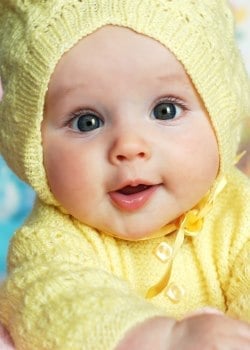

Eye Color Chart: What Color Eyes Will Your Baby Have?
Looking into your newborn's eyes... Nothing compares to it, at least when they're open!
However, if you have had the chance, you may have noticed a curious trait of newborn eyes: baby eye color can change - and it usually goes darker. So, when can you know a baby's eye color if it's always changing? And, for example, what hue will gray newborn eyes turn? Can a child born to two brown-eyed parents have blue eyes? We now have some answers.
Of course, no two babies are the same. That would be far too simple to predict! What applies to many babies may or may not apply to yours. So, let’s have a look.
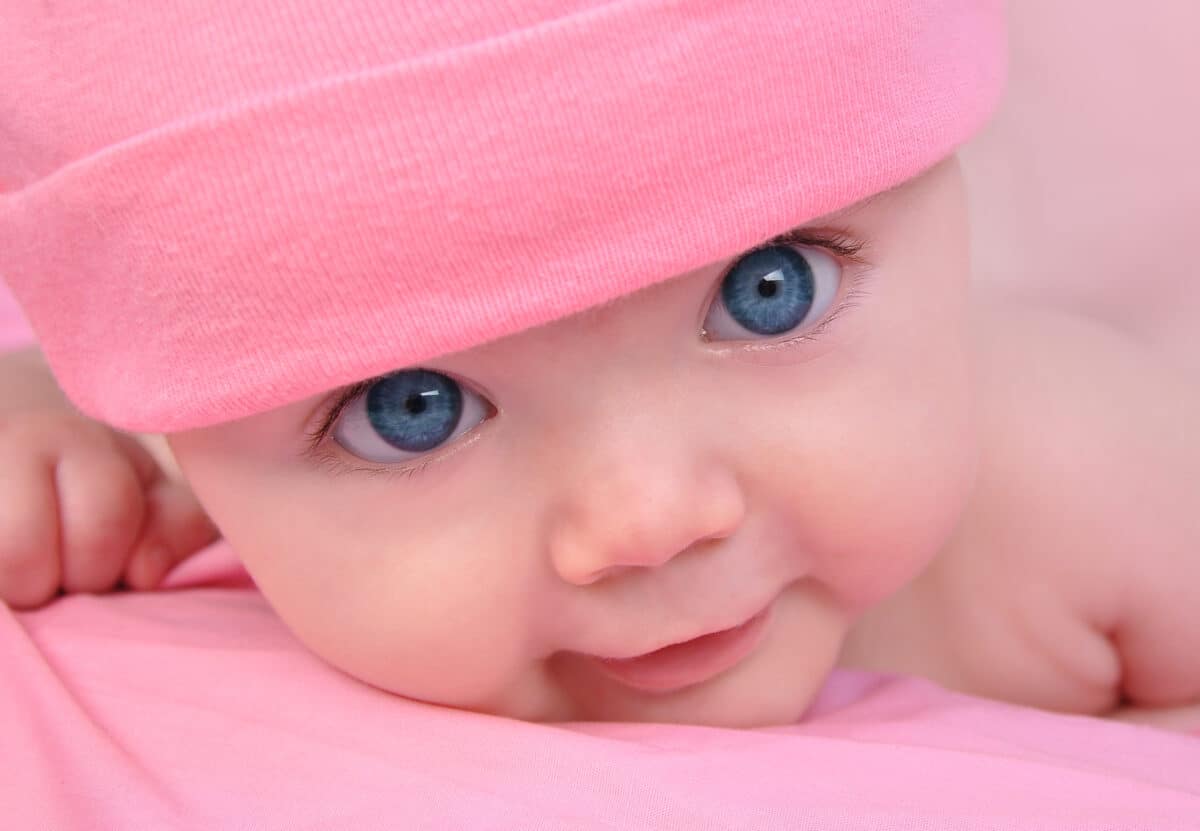
©CreativeAngela/Shutterstock.com
What Will the Color of My Baby’s Eyes Be?
When we speak of baby eye color, we are referring to the color of the iris.
Forget about the pupil; it will always be dark. Meanwhile, the whites of the eye will likely remain white. The iris, however, changes color from baby to baby and from human to human. This is the muscle around the pupil that regulates the amount of light that enters it. And the color of a baby's eyes is determined by a substance known as melanin.
Melanin is a genetic trait. That implies infant eye color is as well. This means that your baby will most likely have dark brown eyes if your partner, or you, possess this common eye color.
This indicates that they have a lot of melanin. If both of you have blue eyes, your baby's eyes are more likely to remain that hue when they grow up. (which means that there is a very small amount of melanin present). The greens and mild browns appear in the center.
But genes aren't that straightforward. If you have any blue eyes in your family, for example, having a blue-eyed baby becomes considerably more likely. As a result, predicting your baby's eye color is not always simple.
While your genes can provide a good idea, an accurate newborn eye color calculator is a bit much to ask. Perhaps one day it will be possible to do this!
When Do Baby’s Eyes Change Color?
The most noticeable changes in your infant's eye color occur throughout the first 6-9 months. Their eyes may darken due to melanin synthesis. Typically, you will not notice it all at once, but rather gradually. A baby's eyes frequently change color during the first year of life. Color changes are most noticeable between 3 and 6 months. At 12 months, many babies have their "final" eye color.
However, the hue you see after a year could still be in the works. It can take up to three years for some babies to develop a permanent eye color. This is why your children may have blue eyes while you and your spouse have brown eyes. Two blue-eyed parents are more likely to have a child with blue eyes, just as two brown-eyed parents are more likely to have a child with brown eyes.
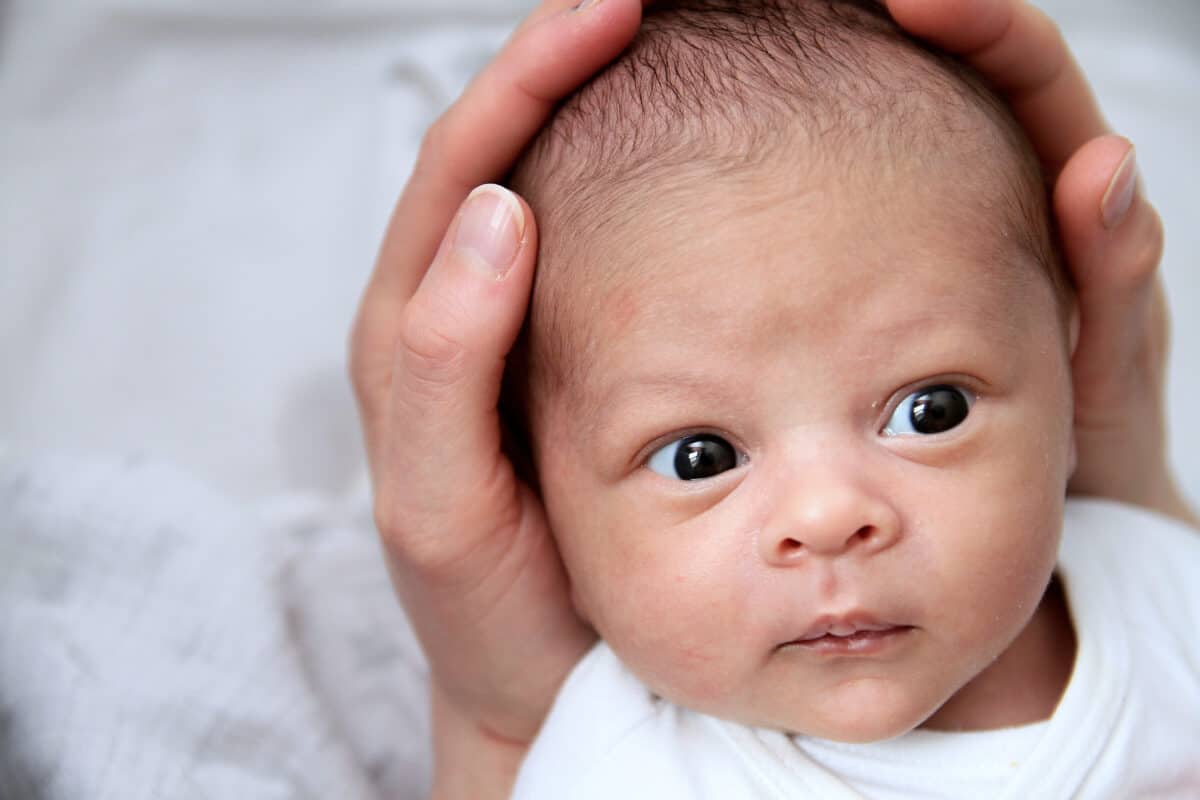
©Herlanzer/Shutterstock.com
Eye Color Prediction
Because so much remains unknown about the interaction of genes and their role in determining eye color, making predictions about what hue your baby's eyes will be is difficult. However, there are some probabilities to consider:
- Parents with blue eyes: The baby will almost certainly have blue eyes, although this is not fully guaranteed.
- Parents with brown eyes: The baby's eyes will most likely be brown, but if both or either parent have family relatives with blue or lighter-shade eyes, the infant may have an eye color different than brown.
- One parent with brown eyes and one with blue eyes: There is a 50/50 probability that the infant will be born with blue eyes.
- Hazel or green eyes in both or one of the parents: It is difficult to tell whether the baby will have green or hazel eyes.
Generally, eye color shifts from light to dark. If your infant has blue eyes at birth, they may eventually change to brown, hazel, or green. However, if your kid is born with brown eyes, it is unlikely that they will turn blue.
It is difficult to determine the color of a baby's eyes simply by taking a quick look at the parents' eyes. The procedure is far more complex than that.
What Factors Influence a Baby’s Eye Color?
Your eye color is primarily determined by your genetics. If everyone in the family has brown eyes, the new baby is almost certain to have them as well. However, depending on how the chromosomes come together when a newborn is born, some families have distinct eye colors. Many individuals have previously used eye color charts to determine what eye color a child would have depending on what the parents would prefer. Even though the use of these charts can be helpful in determining eye color, they are mostly inaccurate.
Generally, two parents with brown eyes are much more likely to have a child with blue eyes than two parents with blue eyes. This is because persons with brown eyes are more likely to pass on the less dominant blue-eyed feature several generations later, until the genes for the lighter eye color match.
Both the parent's eye color and the frequency of the alleles influence the newborn's eye color. In some cases, the child is born with two alleles that are dominant, one from each parent, or both. A baby eye color chart is provided below to help explain this likelihood:
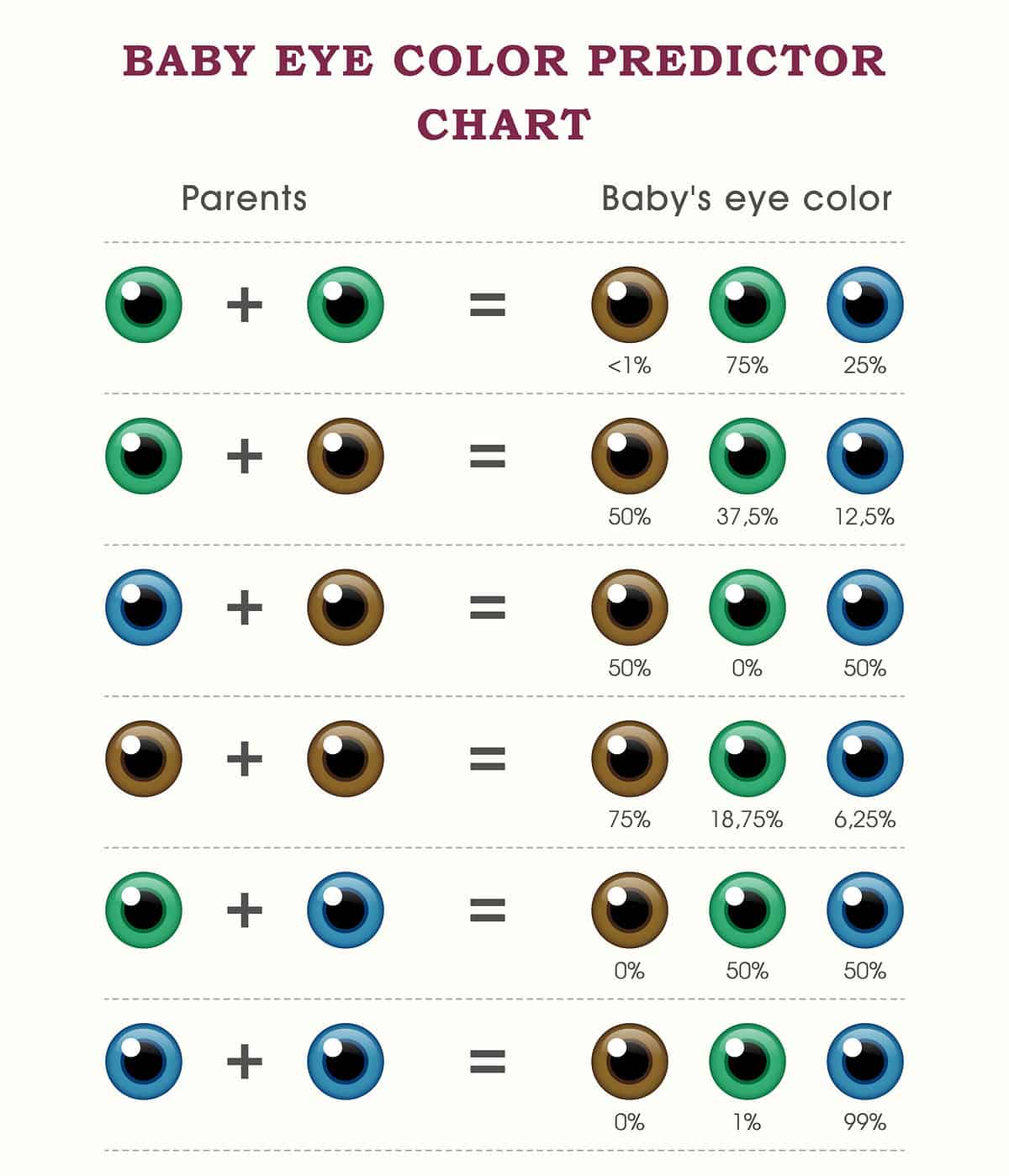
©vectorscore/Shutterstock.com
- If he gets a dominant blue gene passed down from one parent and an allele that's dominant and brown in color from the second parent, he will have brown eyes.
- If both parents have the green gene, or if one parent has the green allele and the other has the blue allele, the child will have green eyes.
- A newborn infant will have blue eyes if both parents possess blue alleles. The newborn is likely to have blue eyes because blue is recessive rather than dominant.
It takes time for blue-eyed newborns to manufacture the pigment melanin. As a result, the baby's eye color will not be determined until he or she is about 3 years old.
Eye Color Concerns
Children are sometimes born with irises that are not of the same color. This abnormality, called heterochromia, is usually present at birth. (where it is called congenital heterochromia). It normally has no significant side effects.
However, heterochromia can also be caused by trauma or a medical condition. Horner's syndrome, for example, is a disturbance of the neural pathway from the brain to one side of the face and eye that can result in unexpected changes in eye color. The afflicted eye is frequently lighter in color than its counterpart.
Waardenburg syndrome is also a medical condition of this kind. It is a collection of hereditary diseases that can result in significant eye color alterations.
Children with this syndrome frequently have very light blue eyes, one blue and one brown eye, or one eye that is segmented into two different colors.
Contact your pediatrician if you notice any unexpected changes in your baby's eye color. They may recommend that you see an ophthalmologist.
Protect Your Baby's Eyes
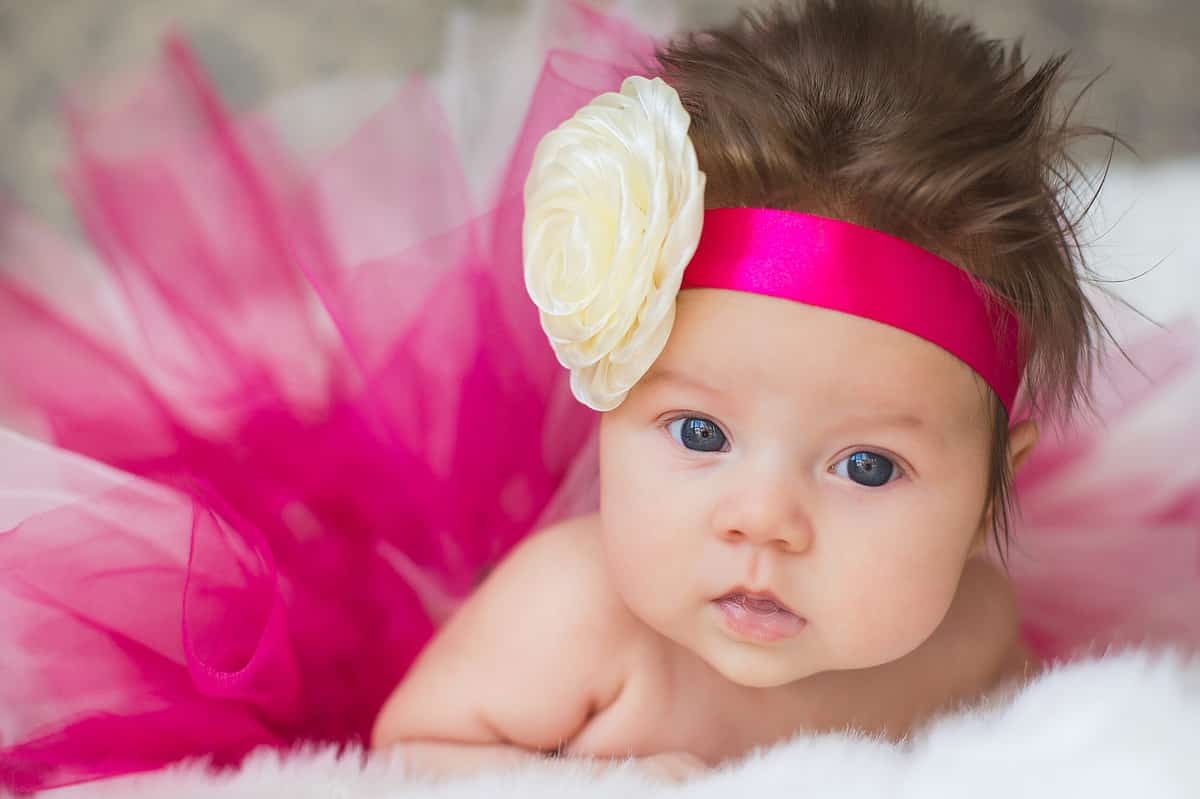
©HTeam/Shutterstock.com
Because your baby's eyes are so delicate, you'll want to take extra precautions to keep them clean and safe. First, you may notice a small discharge from your baby's eyes in the first few months following delivery. When bathing them, carefully clear away any discharge. You should avoid washing your baby's eyes with a washcloth or wiping them with tissue all the time.
Second, watch what you give your little one to play with. Babies have relatively limited muscle control, thus they frequently poke themselves in the eye without meaning to. In fact, these kinds of accidental eye injuries are prevalent even in infancy and can result in irreversible loss of vision in some situations. Instead, give your baby age-appropriate, clean and safe toys to play with.
Finally, pay close attention to your baby's eye alignment. While some misalignment or squinting is normal in the first few months, if it persists after 6 months or if their eyes appear unstable in any way, consult your baby’s pediatrician. They may recommend that you see an ophthalmologist.
Conclusion
During their first year of life, your baby will go through a lot of changes. Some of these changes you can control, while others are completely out of your hands.
There isn't much you can do to change the color of your baby's eyes other than contribute your genes.
So, while you may be hoping for "baby blues" or a "brown-eyed girl," it's advised not to get too connected to your child's eye color until they are past the age of 1.